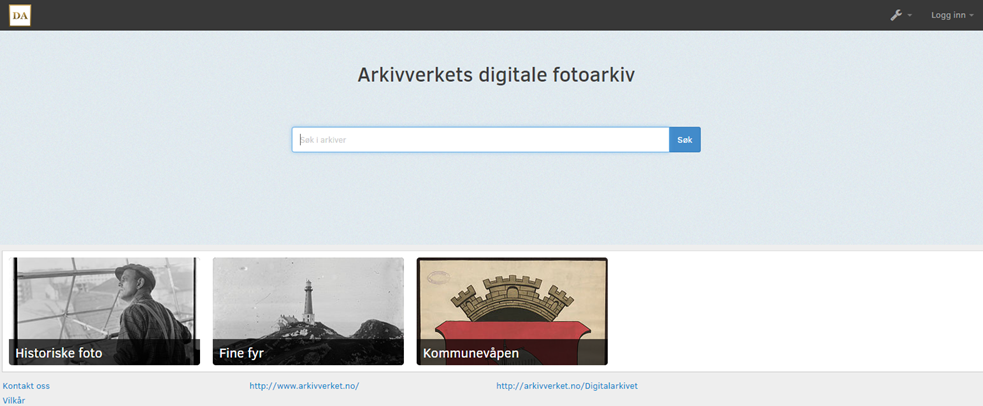Historical photos
Photographs are not objective impressions of a historical moment. The impressions they evoke are influenced by a photographer's view, the intention behind the photograph, as well as certain technical and aesthetic conventions. Nevertheless, photographs possess a visual character which makes them a unique source for knowledge of the past.
Digital Photo Archive
On the National Archives Digital Photo Archive, you can search through our photo archive collections. The photographs originate from a number of different archives, both private and commercial, as well as organisations and public sector entities. Some of the photos are taken by professional photographers, others by amateur photographers and individuals.
In the middle of the page, you will see a search box. This is a free-text search, which means you can match against all information registered to a particular photo. How detailed this information is will vary. In most cases, we have included only the information which has been provided in the archives themselves. We do our best to categorise the photographs geographically by region and county. Identification of featured individuals is a time consuming process and for this reason, many photos will contain little or no such information, even if it could have been of great interest.
By registering a user account in the photo archives, you will be able to make your own albums, comment on archive photos and make use of the advanced search features.
Usage of photos from the digital photo archives

The majority of photos in the National Archives Digital Photo Archive can be used freely, and without restriction, but some are restricted for commercial use. Every picture in the photo archives has a tab which says "Rules for reuse", where you may find the usage rules that particular picture.
"Rules for reuse" explains whether a picture is in the public domain; and if not, which licensing conditions apply. In addition, you can read about "Conditions of Use".
Conditions of reuse
CC-licensing is an international system for labelling of copyright protected material. CC stands for "Creative Commons", an organisation which encourages the legal dissemination of copyrighted material. The copyright holder or licensees can choose from four different criteria when creating a CC-license
- Attribution (BY) - The author and copyright owner must be accredited
- Non-commercial (NC) - May not be used for commercial purposes
- No Derivatives (ND) - May not be altered or included in other works.
- Share-alike (SA) - Must be published using the same license
The National Archives would like photos to be used free and without restriction as much as possible. For this reason we have chosen to use CC-BY or CC BY-SA as much as possible. Photos using these licenses require accreditation of author, copyright owner and the preservation institution.
All photos can be downloaded in a high resolution format which is more suited to printing, or low resolution for displaying on a screen.

